SpaceSector has gotten a chance to play a bit of the “beta” for Stars in Shadow, the upcoming turn-based space 4X strategy game from the small independent team of Sven Olsen and Jim Francis (Arioch). Both developers are enthusiastic fans of the genre and also huge fans of the Master of Orion 2 classic. You can read our first article about this game if you want more background information about the developers and the inspiration for the game.
Stars in Shadow focuses on giving both turn-based strategy and tactical battles similar to the classic, with the focus in reducing the micromanagement of colonies. In many regards the game follows on the classic’s footsteps; this includes researching techs that tend to unlock ship modules and to design your own ships with said researched modules. There are also techs that improve your colonies’ capabilities. The combat is also very reminiscent to MOO2 where ships move and fire their weapons in turns, launching fighters, or using point-defense (PD) weapons to intercept enemy fighters or missiles.
During this preview we had the chance to ask the developers a few questions concerning many of the areas still under development. The answers are presented below in their relevant sections. The questions were asked after my play experience, thus many of them were based on actual gameplay observations.
What is not in yet?
We should make it clear that the game is still not feature complete as many elements are in development. Some would probably prefer to use the term “alpha” to describe the game. Since it seems the terms are sometimes used to mean different things for different people, I will clearly define the state of the game to avoid confusion. At the moment, the game contains the initial tiers of technologies (with only a few techs from the later tiers), diplomacy is not in, and there are still improvements to be made on the planetary management levels, such as the possibility of additional resources.
The game has space combat, early and perhaps mid-game techs, ship customisation, and naturally the core of planetary management: production and science. The game also shows some of its more advanced features like population limits being affected by how you mix your colonies with the different races in your empire, and the event system as you explore new star systems (though at the moment it’s all slavers and marauders).
Currently, we are limited to playing on a single map with all factions enabled. Naturally, I asked about their plans for the future regarding new game set-up options:
“Exactly how much to expose in the setup screen is something we’ll be adjusting as the beta continues. To start with, you’ll certainly have basic options for galaxy size and density — along with a choice of rivals, and an easy/medium/hard mode. In my mind, those are the core variables that a 4X game ought to provide. We’re also planning a few advanced setup toggles, along the lines of the resource density and “raging barbarians” options from Civ, that will give you some control over the density of third-party opponents and ‘peach’ systems.” – Sven Olsen and Jim Francis
I also asked what we could expect from the encounter system later on:
“We plan to include a variety of planetary and system specials, more interaction with the minor factions that are sometimes found on planets, and a few honest space monsters. We also plan to make the pirate and marauder factions much more active, rather than simply guarding systems, we’ll be giving them the ability to launch raids on nearby systems, to offer shady deals, or even hire themselves out as mercenaries for the right price.”
With so much yet to be seen, we’ll probably bring a second-impression of this title as more features are added before the game is officially released. Now, onto the preview.
Visuals
The most obvious thing that stands out and adds immersion to the game is the game’s art direction. The game’s visuals are rich and much stylised, using a colourful palette and a comic series style art work. This is also reminiscent of many visuals styles we saw back in the 90’s. This, however, doesn’t mean the game looks dated either. Modern resolutions are present and the style is obviously a more modern adaptation of this graphical style.
The downside is that some may not like this sort of visual flair or its core style. Personally, I like it a lot. The dye-chromatic and “made by Apple” visuals for space games have started to get a little repetitive and it is nice to see a game break away from that trend. The games visuals give it personality and that is even before any actual mechanics come into play, as such I can’t ignore its role in the game’s overall appeal.
Tech Tree
The tech tree is one element that is not fully implemented yet as only the early techs are present. Also, the interface is too straightforward, giving little idea of which direction the player is going on with the technology. The developers seem to be aware of this and plan to do some improvements with the interface. The reason for this challenge is how technologies work; they tend to have various interconnectivities and different routes that lead to different branches. This makes having a traditional tech tree hard to implement (someone did try to graph out the tech relationship and the diagram looked like the blueprints for an FTL drive). The developer seems to be fully aware of this challenge and this is what they had to say about it:
“I think it certainly is helpful to be able to look at a visualization of the complete tech tree — most of the strategy games I played growing up shipped with a poster that gave you a big-picture view of how everything connected to everything else — and as the beta progresses, we’ll be making some poster-style visualizations of the available techs and posting them someplace prominent on the website.
We also have plans to make some simple changes to the current research screen to make it more intuitive to navigate and to reduce clutter, especially during the late game when techs pile up. An in-game tree view of some sort would be nice to have as well, and that’s something we may look into, if there’s time for it.”
What the tech tree does do well is how easy it is to click on any tech in the entry and see that tech’s summary of bonuses, flavour text, and even an image of any system or hull type that was unlocked. This can be done to the pre-requisite lists and leads-to lists, as well.
The developer discusses their future plans for the Tech Tree:
“There are four technological eras in the game, and the current beta includes most technologies from the first two eras and just a few of later game techs. The “Dread Star” hulls will eventually get their appropriate complement of super-science world-destroying weapons, such as the Stellar Surge Beam and Black Hole Projector. Other late-game techs will offer new abilities to terraform and even create worlds, in addition to new ways to destroy them.
Beyond that, you’re likely to see a number of new techs as we refine the planet production rules. Specifically, as we start to experiment with mechanics for morale, mining, and farming — you can expect to see a number of related techs appearing in game.”
Ship Designer
Let’s go to the ship designer, since generally a game’s space combat mechanic will always be dependent on how good this part is. The player gets to slot equipment into their vessels by using pre-determined slots that are determined by the ship’s class. These slots are categories like heavy slots, turret slots, and system slots. Different modules will have different slots they can fill, heavy weapons can fill only heavy weapons, light weapons can fill any weapon slots, PD weapons are limited to turrets only, and different systems have different slot requirements which usually makes you choose what to sacrifice. One example is the “shield regenerator” which would require you to sacrifice a larger weapon slot, or “blast doors” which makes you sacrifice turrets.
Unlike other games where players unlock hull sizes only, in SiS the player will unlock hull types, with several per size categories. This may seem to limit customisation but nothing stops the player from researching the other hull types. On the flip side, different ships get different art assets, carriers look like carriers, and are visually different from your battle cruisers. This adds to the games visual richness and helps define a vessel’s role from the start. With the myriad of hulls, the player should be able to make the type of vessel they want easily, it is just the matter of unlocking the correct hull type and the weapon modules that complement it well.
Along with hull specialisation also come different slot arrangements, making each ship more distinct from each other within the same hull size. Also, nothing stops the player from having several different ship classes with the same hull type. You can design an interceptor carrier with some long range weapons and a second bomber carrier with PD coverage by using the same basic hull frame, giving the player plenty of opportunities to make unique ships to fill unique roles. Also, with the plethora of auxiliary systems, the player can design heavily shielded vessels to vessels that are resistant to boarding actions.
Also, if you researched the correct techs you may apply modifications to weapons like rapid fire or accuracy. These will usually require more energy and may mean you will have to choose what you will “supercharge” as you may not always have enough power to have it all. Weapons also come in different flavours, like classical missiles to beam weapons. Even within a group, different type of benefits like disruptors versus lasers are available to the player. For direct fire weapons, the differences will come from innate perks, one weapon may have higher damage, but the other may do more damage against unshielded targets.
Despite this is one of the areas I am most impressed with, the developers reveal that more changes are coming in improving the interface and the designs themselves:
“I think the UI needs to be reworked to filter the available weapons/systems based on the selected hardpoint — that already feels like a necessary feature, and I think it’s only going to become more important as the later tiers of the tech tree get fleshed out.
I also think most ships are going to need to have more hardpoints — right now, my sense is that we have a number of cases where the available hardpoint sets have been excessively simplified.”
Space Combat
The space combat does exactly what it says it does on the tin. Turned-based combat where the player can move their vessels, pick targets, and fire at them. This can range from firing direct fire weapons, launching fighters and bombers, or firing missiles which travel a certain distance per turn. The player can also use their PD systems to intercept missiles and fighters or use weapons non-optimally, firing PD weapons on missiles (which have a higher chance to miss and be overkilled if they do hit) to using PD weapons to finish off a vessel on the verge of death. Also, PD weapons can be left unfired and will fire reactively on the enemy’s turn to defend your ships from intercept-able attacks.
The controls seem to be pretty quick to manage, which is a plus for turn-based combat as it is all too easy to have time wasted on clunky controls. The player can quickly move a ship, select its heading, and fire its default weapons all by merely pointing to where they need to go and by clicking the right-mouse button. The player still needs to be careful not to accidentally do an action inadvertently, but overall the controls are intuitive enough. Finer controls of only firing certain weapons and the like can also be taken.
Planets will also be defended by defense systems and orbital facilities, which will need to be cleared before you can invade your opponent’s worlds.
Ground combat is abstracted, and though there may be some changes or improvements before release, the current version is about deciding which point you can invade, or cleanse the surface with further bombardments, plus a simple mechanic of bombarding a world till its population is equal to or less than your troops.
Planetary Management
The current approach to planetary management seems to be to keep things quick to manage but still important to oversee. At the moment the system works by slots. Orbital slots and defense slots are based on technology, while the population determines improvement slots. At the moment, the two economic buildings the player can build are factories and labs, which get upgraded versions with higher tech. This effectively determines the planet’s output. In some regard it can be seen similar to the use of workers or sliders, along with infrastructure scaling, but here the infrastructure is your “work distribution” as well. The developers mentioned there will be changes to the system, as more resources are added to the economy model.
The idea is that a specialised planet can’t just flip its output overnight. It will require older infrastructure to be scraped and a new one be built. The developers hope, as more resources are added, that this will create planet focuses and avoid the planet clone syndrome, the trend you tend to see in a lot of space 4X games where a healthy economy can support maxed out planets and then the player can refocus its output as needed on a dime. The approach here is your worlds will have dedicated roles, and though these roles can be switched around it will take time and resources to do so.
Despite the early build of the game, one of the more interesting aspects of empire management is already present: the population limits. Planets are not mono-biomes. An Earth-like world is a mixture of forests, deserts, and oceans. Each race has an affinity towards each biome. This means if you mix your populations, aquatic species will fill the oceans, while desert loving species will maximise your desert biomes, while your trusty humans will stick to their preferred biomes leaving the less desirable ones to those who prefer them, and the ones they can’t even fill to those who can. The end result is the total population of your planets goes up, meaning more output from your industry, research, and economy.
The developers have noted that there will be negatives for mixing worlds in the form of morale penalties (which is not yet implemented) and technologies to help alleviate these issues. This creates an interesting mechanic of multi-racial empires as some worlds will benefit more from certain races, and cosmopolitan planets being exploited to their full potential. The developers said this will also play an important role in diplomacy as species will generally not like it when you go to war with their brethren.
At the moment, with no diplomacy or morale in the game, the more nuanced elements of the system can’t be observed. Still, seeing population influenced by biome preferences and planets being made up of several biomes is interesting to see. More from the developers about planetary management:
“We’d like to encourage a bit more variety in terms of the roles than any particular colony can play in your empire. And we think that broadening the resource model is likely to be a good way of doing that. We have plans for adding a metal resource and matching mine improvements — along with food/farms. Both metal and food will be global resources (like money) and they’ll play important roles in population growth and ship building.
The other big change we’re planning in the planet management system is the introduction of colonist morale, in which each species on a world can be made either happy or angry by factors including the other races sharing the planet, the work you’ve assigned them, and the diplomatic choices you’ve made. So, if you have a number Phidi in your empire, you may need to think twice before declaring war on their brethren.”
Overall Experience
It is hard to form a full professional opinion on the game at its current state, as one would expect to see from a full preview, this said I have to admit I did like what I saw, and liked it a lot. Naturally, as the game’s features get added I will be able to be more critical and offer more concrete opinions about the game, but at the moment I’m actually eager to see how these features are implemented.
One thing I can say is that the game definitely tries to be much quicker to manage without being overly simplified, an objective the developer mentioned in our first coverage. I found it quick to learn the mechanics and get into the game. The pacing is not perfect yet, but the game definitely flowed well.
Stars in Shadow definitely has the spirit, flair, and infrastructure to evolve into something very noteworthy. And, as I mentioned before, our intention is to bring you a second impression as more of the game’s features are added and the game comes closer to a completed experience. This is definitely a title I will keep a close eye on.
What does the future hold?
I was able to ask a few more questions to the developers and many of their answers did not fit in with the given sections of this preview. So, let’s look at future developments the game has in store for us. The most obvious question was about a major feature that was not implemented yet, the Diplomacy system:
“The diplomacy screens we put together during the alpha behave very much like similar screens in Civ V. But I think it’s important to emphasize that our goal for the AI factions is to create satisfying in-game characters, rather than artificial stand-ins for human opponents. The AI emperors won’t understand that they’re playing a video game — and while they’ll certainly want to grow and prosper — their programming won’t demand that they attempt to win the game at all costs. And that gives us some space to include AI behaviors that are more “character driven”.
For example, one feature we have in the pipeline are some diplomatic options loosely inspired by Mass Effect. We’ll be tracking your reputation with the various AI empires, and you’ll have the option of explicitly calling in a favor from a faction you’ve had good relations with in the past. Among other things, that’s a game mechanic that should be important in setting up a council victory condition.”
I also snuck in the question if we could expect Espionage for release, sadly the answer was no. However, the developers still had something to say about it:
“Espionage is an interesting one. Right now, it’s not on our list of “must haves” before the game releases, but, I think a simple espionage mechanic (along the lines of Alpha Centauri’s probe teams or MOO2’s spy system) could add a neat aspect to the game. I’d certainly like to include such a system eventually — the question is whether or not we’d have time to get it into the initial release.”
Another question I had was about the differentiations between alien races:
“Currently, the build includes racial population specializations — for example, Orthin colonists produce extra science but less industry, while Teros get a bonus to production. Also, each race’s population has preferences for different planetary habitats — some do better or worse on warm and dry or cold and wet worlds. Moving different populations around can help you to make the most out of available habitats, and further specialize planetary production.
All the races have customized home-systems, and in some cases this significantly changes their options in the early game. In the current build, Humanity’s starting condition doesn’t include any settled homeworld whatsoever, while the Haduir start in possession of Ashdar Prime, a powerful relic world.
In addition, each race will get at least one technological perk. Most of these are not yet in the game, but will be added before the end of beta. The Haduir are slated to get access to a relic Star Gate, while the Gremak will get early-game special weapons and cloaking devices. The Phidi will get a perk that gives them a bonus when hiring mercenaries from the various NPC factions — a feature that will be available to other races as well, but which the Phidi will be well-positioned to take special advantage of.”
Lastly, I have had a minor pet peeve in 4X games lately, and it was only natural I asked Sven and Jim about their opinions on the matter. It is about the subject of Victory Conditions and End-Game Grind:
“We’re planning to include a simple Moo2-style “planetary council” victory condition. In effect, if you and your allies control a sufficient fraction of the galaxy’s population, your remaining opposition will bow to the inevitable and surrender, rather than grinding out a hopeless war.
We also have plans for at least one relic world that will open a path to scientific secrets capable of handing you control of the galaxy. This means there probably will be something roughly like Civ’s “science victory”, with the caveat that it will be connected to certain special planets that may not appear in all games.
Eventually, I’d like to include an optional game mode that would shift the victory condition from conquering the galaxy to successfully defending it from some suitably extraordinary menace. Warlock included something like this with their “Armageddon” expansion, and I think it worked pretty well. I’d like to do something similar in an SiS expansion — if and when we have time / money for it.”
There you have it. A few hints on some of the future plans for the game after release. However, let’s focus on what we have now and what to expect for release. This however does show the developers have an interest to continue developing the game, if all goes well. SpaceSector will keep a close eye on this title and bring you further information as it becomes relevant. Feel free to ask questions in the comments section below.
The developers have made Pre-Orders available on their official website and have a beta sign-up as well. These two are separate and one can register to the beta without pre-ordering the game. Recently, the decision was made to allow pre-order customers access to the beta. However, as stated, one can still sign up to the beta without pre-ordering the game. The game’s current price is set for $19.99 USD and is available for PC.
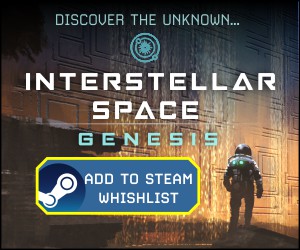
30 Comments
Related Articles:
- Master of Orion – Early Access First Impressions
- Interview with Horizon Designer and Producer Raffi Parsekhian
- Stars in Shadow – Early Access Preview and Interview
- Planetary Annihilation – A Next Generation RTS [Kickstarter]
- Project Space Sector Dev Diary #3: Research

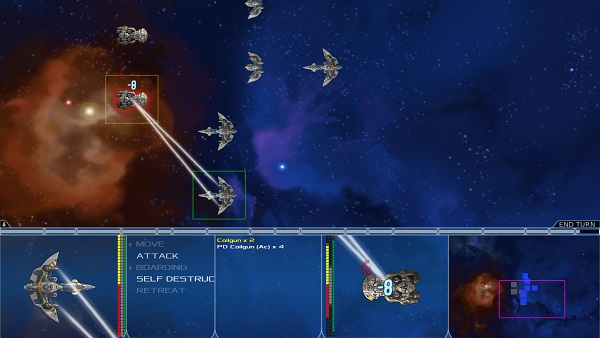
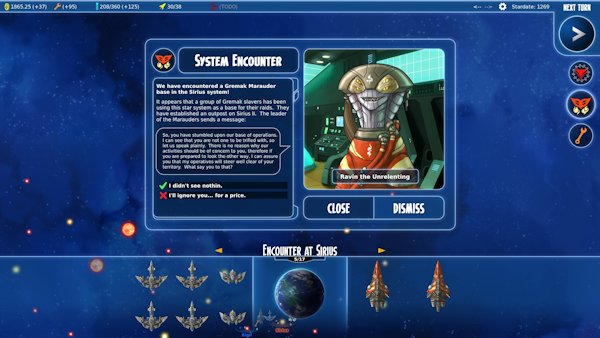
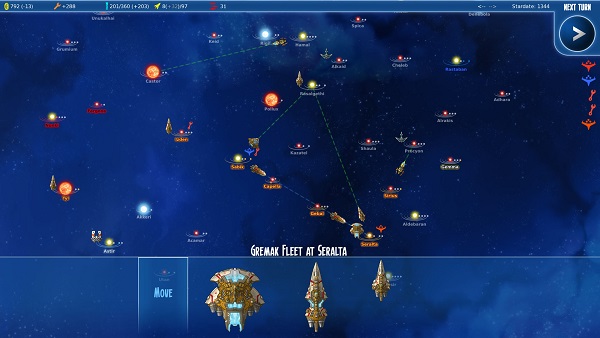
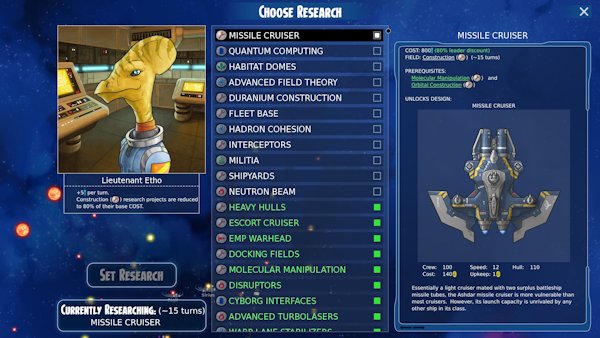
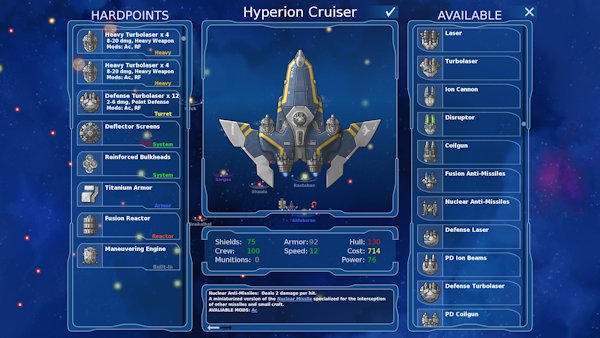
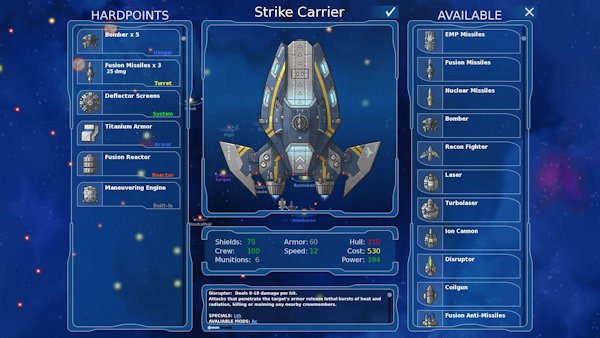
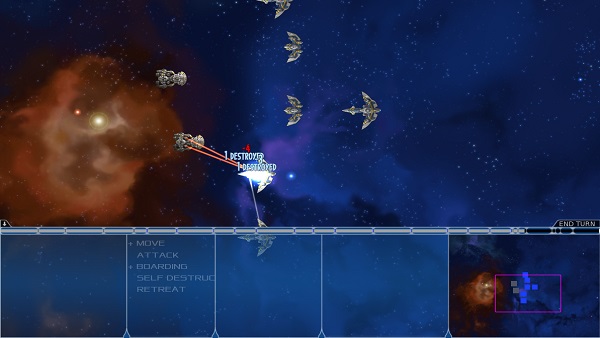
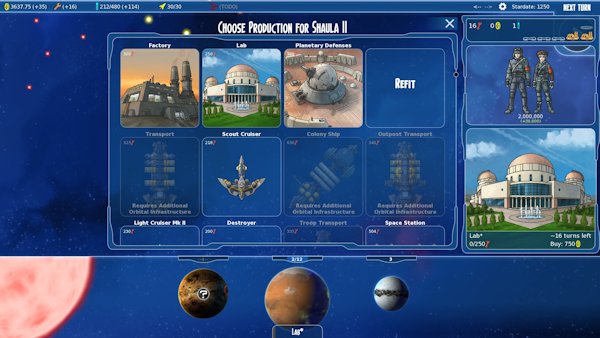
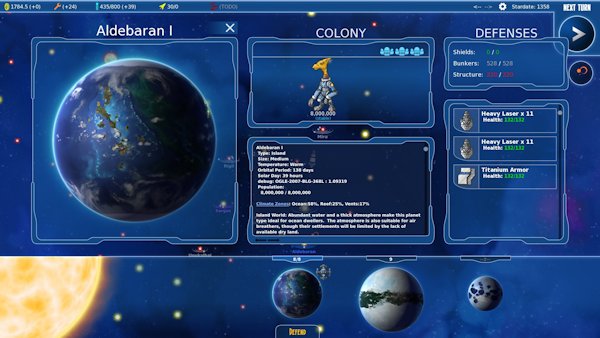
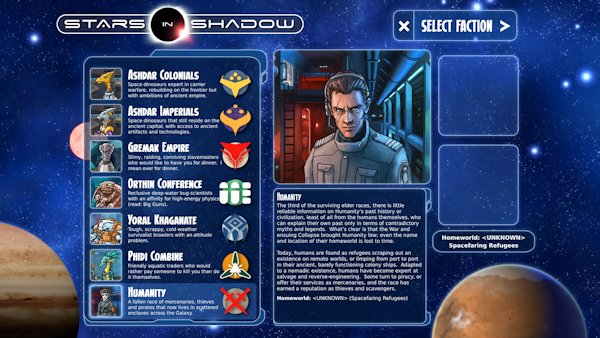
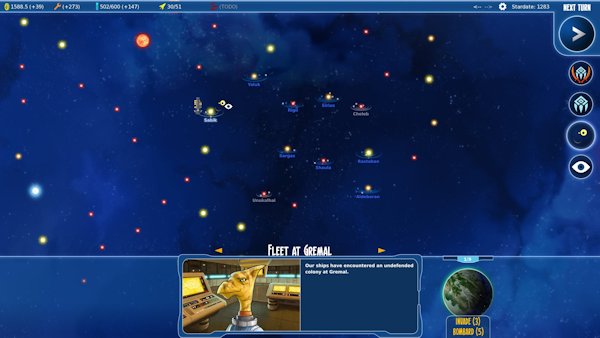
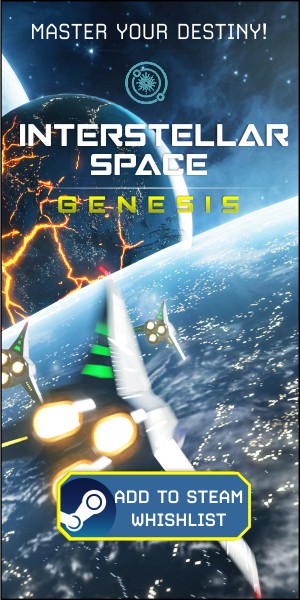


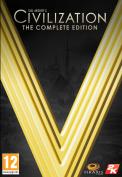


“This however does show the developers have an interest to continue developing the game”.
Marvelous, thanks for the info.
In a few weeks, if they are still interested in their own game please let us know.
yours
SamDog
I have had access for several months, and though development has been moving ahead slowly (but no slower than any other games at this stage of the development)*, it has been moving forward. The game gets patched and updated regularly, and the forums have discussions about the game’s future development.
*A lot of the changes come closer to the end. A game may stay in a shake-down beta for awhile near the end, but usually for 90% of a game’s development it doesn’t even look like a game. Most games practically come to fruitarian in the last 10% of development.
Sounds great! This is one of the games I’m looking forward to (checked it in the last website poll).
OTOH, the current website poll indicates I’m getting old :(
So do I, but seems our readers overall is at higher bell curve peak for average age. I am actually happy to see the number of teenage demographic we have. Not a lot but it is nice to see it.
A lot of oldies like me usually fear the ‘younger strategy gamers’, fearing ‘oversimplification’ or ‘actionification’ of the genre. Personally, I welcome them. A genre needs new blood, and soon some of use will start to die from old age (boy did I turn morbid), so we need replenishments.
So even if the genre changes a little, as long as it survives so that our children and grandchildren can enjoy it.
Why did that feel like a speech? ;)
What is the ETA on this? It seems development is pretty slow and the game needs a lot of content added yet.
Their website says, second half of 2015. But the game has had delays on their timetable. Usually I see them update the estimate before it gets too out-of-date.
Looks very cute. Seems to value immersion quite highly which is good.
I’m watching this :).
Is it the lack of proper marketing strategy, the need for early access money or just hubris that indie devs nowadays happily trumpet their alpha stage games to the public?
Indie games has a higher failure rate than your typical small business startups even when you discount quality. This game looks to be about a year away from a proper beta so talking about it serves no real purpose to us gamers now. Everything good about this game so far are also the generic staples of sci-fi 4X so it’s the same ol’ same ol’; at this rate, any indie games causally referring to themselves as inspired by MOO2 should be regarded as a negative.
Why can’t devs accept MOOs or SMAC etc are special because they were unique when we first played them and not because of any particular mechanics like ship building or UIs or planet management. Trying to get lightning to strike twice by attempting a carbon copy is impossible because the magic is gone already.
Show me YOUR game. Not MOO2-2015.
SQW;
Part of the mystery around moo2 was just how bad moo3 was.
I’m not sure why spacesector thinks these guys were worth mentioning, but at least we know they are still interested in their own game.
yours
SamDog
M003 had some solid ideas behind it. As often happens the game was pushed out too soon by the publisher so the game was released in beta more or less and never completely finished. It was a different dev team behind MOO3. When the game reviewed and sold poorly the publisher stopped supporting the game. They only released a couple of patches and those only addressed the worst bugs. Advertised features were never implemented.
With all the patches and the fan mods* it’s not bad at all. I had fun with it. The designer was trying something similar to what Distant Worlds became with the Legends expansion (only turn based instead of real time).
* I wouldn’t recommend playing it there are better options but I think if the devs had been given another year MOO3 would have been a really good game. The fans would probably have still hated it though because it is very different from MOO2.
MOO3 development was hell. The original team got downsized, and the extra help they got had no clue what was going on. Some have described the code of suffering from ‘black box’, which at the time was slang for bits of code no one knew what it did, but if you touched it, things happened. So it did do something!
After the game was released most of that staff got laid off, the few developers that were left did not have the resources and the black box problem got even worst. The few official patches it did get were miracles. I think one of the official patches was actually unpaid work. The first fan patch was actually an ‘officially made’ patch that was never released. (I may be splitting the two up, and they were the same ‘patch’, as in the unpaid work was the first unofficial patch that was released.)
MOO3 would fill a chapter in a text book for a game that went to hell if Gaming was taught like History.
The fact that I played MOO3 before MOO2 was for the better, in my opinion or I could have become spoiled.
Anyway, MOO3 has indeed a lot of interesting ideas and I believe the community saved this game with many mods/fixes.
MOO3 is really about macro, but many people got frustrated with it trying to micromanage everything.
It really is just the need for early access money and alpha/beta testers.
Indie games have a higher failure rate than a normal start up because it’s a lot harder to design and program a game than most other business or consumer software.
Indies are kidding themselves if they think programming games (their skill set) is harder than someone who has to create his/her own line of fashion, consumer electronics or anything really from the ground up. The reason why so many indies devs fail like most small business are the same – lack of planning and skills.
The vast majority of indies devs we see that are springing up like weeds are just talented coders and graphic artists with a dream – very few has a game designer among them (because uni can’t teach creativity) and even fewer knows how to run their studios as a business rather than a buddy-project that would hopefully make money (hands up game design graduates with MBAs).
The current business model seems to be: get a classic game, toss in some graphic updates, sprinkle with new ‘ideas’ that’s usually more bloat than innovation and press blend. Before the finished product is finished blending, and this is the MOST important part, put it on Early Access.
Indies are uniquely suited to Shovel Knight, FTL, Battle Brother, Popcap-ish games but while many play to that strength, so many others choose to jump in the deep end of say 4X and want to create a AAA-lite. And this is just the product design part! Don’t even get me started on lack of team management, business plan, project management to prevent cost overrun or feature creep, a realistic time frame (because we can feed ourselves indefinitely), marketing etc.
I work with traditional SMEs and I tell you, the similarities in failures are striking.
SQW;
I have to agree, every coder I know thinks they can write the ultimate 4x space game or a rogue clone. We hear
about their game for a few years, 10% even get as far as
steam beta.
yours
SamDog
“Indie games have a higher failure rate than a normal start up because it’s a lot harder to design and program a game than most other business or consumer software.”
Business development is made look easy, because it is managed properly. People work based on plans, adhere to deadlines and the guy with the right skills is put to the task.
Indy games have a high failure rate, because they are mostly developed by junior developers with the egg shell still stuck to their a$$.
Well the game’s economy and tech tree model is very different. Even how ships are designed are different (not as drastically, but still different). Some of the techs are similar, but that can be said about half of the science fiction games (movies and novels too) by now.
The game does have many features inspired from MOO2’s mechanics however. Like combat and many of the thematic present (including some features yet to be introduced). Naturally, the developers do confess to be inspired from it.
But honestly, I felt StarDrive 2 was way more MOO2-ish because in SD2 the tech system and the economy (two major parts of the game) were the same. Spying was also very similar. Those two (three) features do end up leaving a stronger impression of similarity. In SIS I would say only the combat is true familiar territory, even the ship designer feels different.
So if your comment is directed at the combat or the fact the developers are fans of MOO2 then yes I can see your point. However, if your comment is directed at other aspects of the game, then I guess my preview did not convey the information properly.
Personally including ‘elements’ that are similar to another game is not the same as just doing that same game. What I mean is saying you will have a ship designer and tactical combat by itself is not a copy yet. Though the combat system is very similar, and does feel and look the same (which I do say in my preview). Indecently, this might actually be a perk and not a flaw for some. Other aspects have fallen further from the apple tree.
Just wanted to clarify what was MOO2-ish and what wasn’t. Now onto my second point:
I understand if the game is too early in development to make a full judgement, which I have said in my preview. This article is a First Impression of an ‘alpha’ build. I don’t care what term the developers or others use, hence why I explained the state of the game in detail. I only care about bringing information and one thing I promise to our readers is that I will always clarify any part which I might have not conveyed properly.
That’s what it is, if the information in it is not pertinent for you, then skip it. I am sure there are other readers that are interested. You don’t get to decide for them what they should have access to. Though our focus of articles is influenced by our readers, it’s influenced by ALL our readers.
Do you buy every loaf of bread at the supermarket, or think the supermarket is doing something badly for having brands of bread you don’t buy? SpaceSector will cover a large number of games through several stages of development. It’s up to the reader to chose what they want to read. This is not a zero-sum game, this article did not cause another article to cease to exist.
Yup, the MoO fanaticism is getting tiring real quick!
“We haven’t had a game like MoO2”.
No, we had tons of games like MoO2 but none of them will ever surpass mediocrity because while design inspiration from MoO2 is smart(?), straight up copying game play elements from that 20 year old game and thinking all magically turn good is…naive?
SD2 is the latest game that almost literally remade MoO2. Enjoyable game but it’s getting repetitive, very very fast. The game’s depth is pretty much cemented in place and only more fluff(new races, tech etc) is expected, which isn’t going to cut it for me.
But, there’s a lot of (old? ;D) gamers that want a remaded MoO2. So yeah, they got what they wanted, so at least some of “us” are happy :).
I disagree. A 4x game is a 4x game and i am expecting many standard stuff. It all comes down for me to mechanics, balance, AI, not some revolutionary new twist of 4x. I WANT the standard stuff, but well done.
Im atm playing for a few days GalCiv 3 and im quite happy with it. It does look on first glance very similar to GALCiv2, but imho the pople that complain about it havent played it for real, and dont get it. The additional stuff introduced (Strategic resources, different ideology sttuff, a bit different starbases mechanics, adjecancy bonuses on planets) make me play differently then Galciv 2 and im having a blast. Its more or less what i expect from a sequel.
Maybe your problem is you are bored with 4x games and cant really apreciate them?
Well, it looks like the game is far along, so I hope it turns out worth a try. So many 4x games have come out recently, but have disappointed to various degrees. Here’s my take on a few reasons why, in no particular order:
1. The usual mix of races. Bugs, Furries-cute or Bear-like, Mechanicals, Tentacled… On the average map, its really too crowded. I’d rather see more depth and development of fewer races. And no timed ends to games. Take a look at the Honor Harrington series to see how a good author develops a setting and continues it.
2. The communication options between races and player give the computer players the best lines. Why can’t we be the clever ones telling them off or how much their deal stinks? Or- Get out of our territory or die? Instead we usually get “yes” or “no”. Wow.
3. Tech trees are revealed and timed, and future techs laid out in the same fashion, game after game. Where’s the thrill? There should be some mystery and wonder involved in scientific exploration, anyone who’s ever watched “Timeline” can appreciate how varied and unexpected a path there is in invention.
4. The games over. All it takes is the discovery of “The Ultimate Weapon” and either everyone gives up, or you’re doomed no matter what you do-my biggest disappointment in M.O.O. . Having finally reached the big tech, I wanted to use it. Everyone surrendered. Space chickens…
5. Pretty pictures. Great opening sequences, terrific panel art, lousy gameplay, buggy as all get-out, never really finished. -don’t bite off more than you can chew. I’ve seen games where it was obvious more time was put into the opening sequence, than the whole game. Make a solid game and expand on it, rather than one that’s all over the place. C’mon, we all have examples of these.
To briefly sum matters up, I’ve been playing 4x computer games since they were invented. Still looking for the “Dream” game. In the meantime, anything will do for a lark. Hey, maybe they need more “X’s”…
Good luck to the devlopers of this latest effort. see you in space…
I realize it is still relatively early in development, but is SIS fun to play? Edward, you mentioned that you “like it alot”, but does SIS have the one-more-turn effect, or is the game a chore?
Recently, I simultaneously created games in two old friends: SotS and SotSII. I noticed almost immediately that SotS gameplay was much cleaner, quicker and more intuitive than SotSII. SotS has that one-more-turn quality, while SotSII is more tedious.
How does SIS fare in the one-more-turn vs tedium category?
People should be copying SOTS instead of MOO2 to be honest.
The former has great lore that actually links to gameplay, a very unique approach to research and streamlined planetary management system that allows you focus on combat and a ship design system that was almost perfect.
Kerberos actually tried to build on existing 4X trope instead of trying to carbon copy the classics with a new coat of paint. The AI was atrocious but my god SOTS Prime got so much right in the end.
The biggest regret in my 20+ years of gaming experience is seeing SOTSII got pushed out the door before its time – no other game had so much potential yet fell so short. =(
Ah, so this explains why we disagree about everything! :)
That question is hard to answer at the moment because some key features are net yet implemented. There is no diplomacy at the moment so the game is an instant total war scenario. Also all the random encounter are slavers and marauders.
I would expect as the economy model is expanded and the diplomacy is added we will see the game take shape where I could make a stronger opinion about matters like this.
Overall, individual turns are easy to manage and it’s relatively quick to execute the changes you want. Even the ship designer is relatively quick to manage.
There is still some places where you fight with the UI (mostly involving planetary production management), but it definitely not a rampant problem like it was in SotS 2.
It’s funny you mention SotS, but the concept of slotting in weapons into slots is very similar. However, there is no arcs or exact placement per say. You got turret or forward facing weapons of different sizes, and obviously additional system modules (along with armour/power/engines). The Developers have said they were fans of SotS as well.
It was mentioned the overall goal for the planetary management is to have a system that was more involved than SotS but not as micromanaged as either MOO2 or Gal Civ (II/III).
At the moment the game does get repetitive because you are at war with everyone, and all the random encounters come from the same grab bag. So despite the individual turn to turn structure is good, the overall game is repetitive at the moment.
Hopefully, once the missing features are added (like diplomacy and expanding the tech tree) this will be addressed. Hence why I said there will probably be a second impression.
This was to raise awareness for the game and hopefully help bring discussion to the developers.
Looks interesting, but how is the AI? Or is it to early to ask?
These days for me its my most problematic point in a 4x game . If bad it might make an outstanding in all others aspects game for me boring after 2-3 hours, meaning wasted money.
Too early to ask, as I mentioned the game only has war now. War on the human player, war on itself. The AI is in constant war with everyone else. I can still talk about it a bit, but nothing I say should be taken as a definite answer or analysis.
The AI does its jobs, it will build fleets and it will use its ship classes. It will expand if it can clear the marauders. It will roll over you if you don’t push it back.
Naturally, it is still young and does make many operational level mistakes (it always presses and never masses, and does not pull back to defend). Sometimes these tactics work, but if you know they are going to do it you can easily plan against it and take advantage of it.
The good thing I can see with the Only War of this early stage of development is the testers have given a lot of feedback (and the developers have acknowledged the weak spots) of the AI’s Warring behaviour and expansion procedures during a war.
So hopefully, all that data will be put to good use and the developers will be able to design the AI to handle these situations and behaviours better. One of my friends once said it is usually best to test AI in extreme conditions. Only time will tell if it’s pull off.
How about making a review of the longest in-development 4X game ever? I mean Free Orion:) The guys are still developing it.
What is there to review? Last time I checked (and I do check every few months), it is still only about halfway through the planned features list, which is not that impressive to begin with.
Yes, they are still working on it, but progresses so slowly that at this rate, it might turn into the first generational game development project, which only their children will finish working on. :)
Still: I tip my hat for their persistence and determination.
I gave up on that game when I heard that they would be using mandatory star-lanes. Personally I don’t care if it never gets finished, there are much, much better games out there.
Stars in Shadow is being released to Early Access on Steam later today.
Steam Early Access Begins: http://stars-in-shadow.com/forum/viewtopic.php?f=3&t=296
No price listed right now, I’m sure that will update when it’s available.